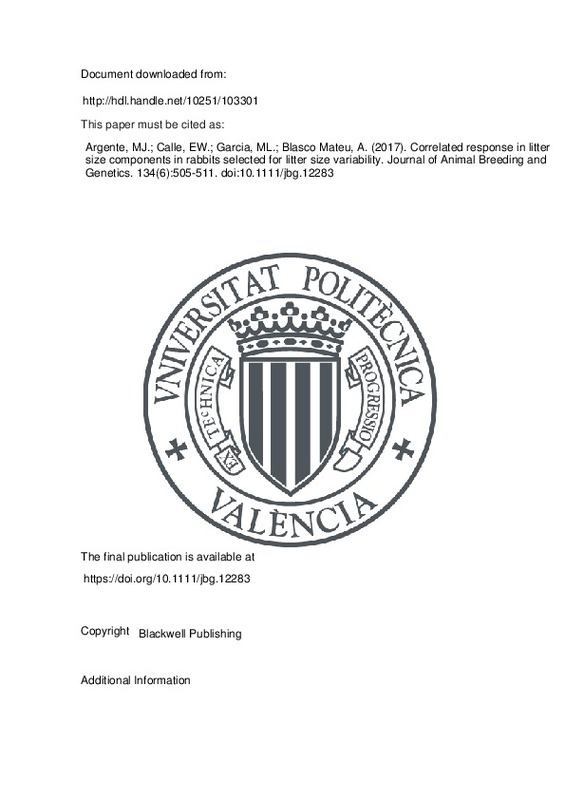JavaScript is disabled for your browser. Some features of this site may not work without it.
Buscar en RiuNet
Listar
Mi cuenta
Estadísticas
Ayuda RiuNet
Admin. UPV
Desde el lunes 3 y hasta el jueves 20 de marzo, RiuNet funcionará en modo de solo lectura a causa de su actualización a una nueva versión.
Correlated response in litter size components in rabbits selected for litter size variability
Mostrar el registro completo del ítem
Argente, MJ.; Calle, EW.; Garcia, ML.; Blasco Mateu, A. (2017). Correlated response in litter size components in rabbits selected for litter size variability. Journal of Animal Breeding and Genetics. 134(6):505-511. https://doi.org/10.1111/jbg.12283
Por favor, use este identificador para citar o enlazar este ítem: http://hdl.handle.net/10251/103301
Ficheros en el ítem
Metadatos del ítem
| Título: | Correlated response in litter size components in rabbits selected for litter size variability | |||
| Autor: | Argente, M. J. Calle, E. W. Garcia, M. L. | |||
| Entidad UPV: |
|
|||
| Fecha difusión: |
|
|||
| Resumen: |
[EN] A divergent selection experiment for the environmental variability of litter size (Ve) over seven generations was carried out in rabbits at the University Miguel Hernandez of Elche. The Ve was estimated as the phenotypic ...[+]
|
|||
| Palabras clave: |
|
|||
| Derechos de uso: | Reserva de todos los derechos | |||
| Fuente: |
|
|||
| DOI: |
|
|||
| Editorial: |
|
|||
| Versión del editor: | https://doi.org/10.1111/jbg.12283 | |||
| Código del Proyecto: |
|
|||
| Agradecimientos: |
|
|||
| Tipo: |
|







![[Cerrado]](/themes/UPV/images/candado.png)


